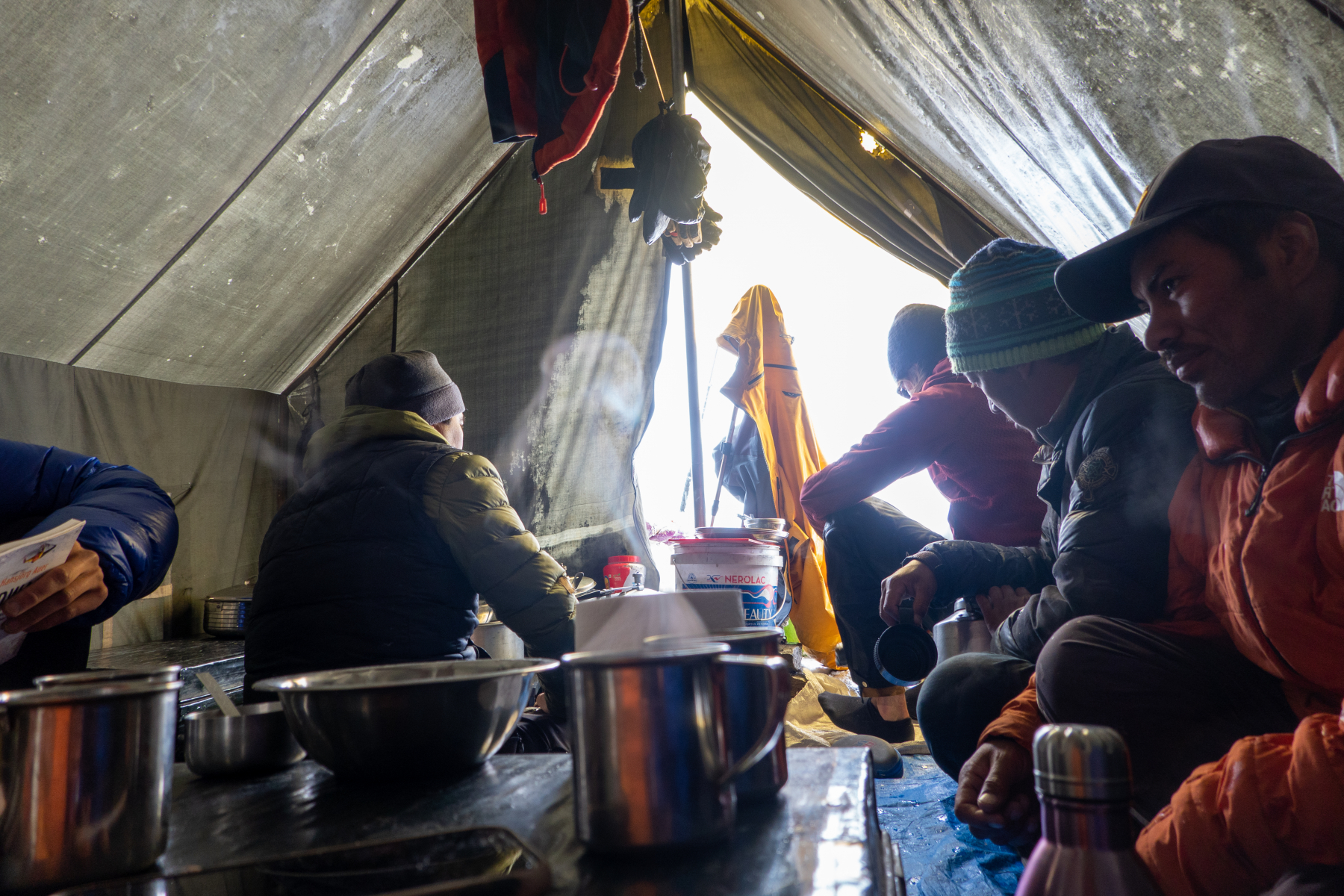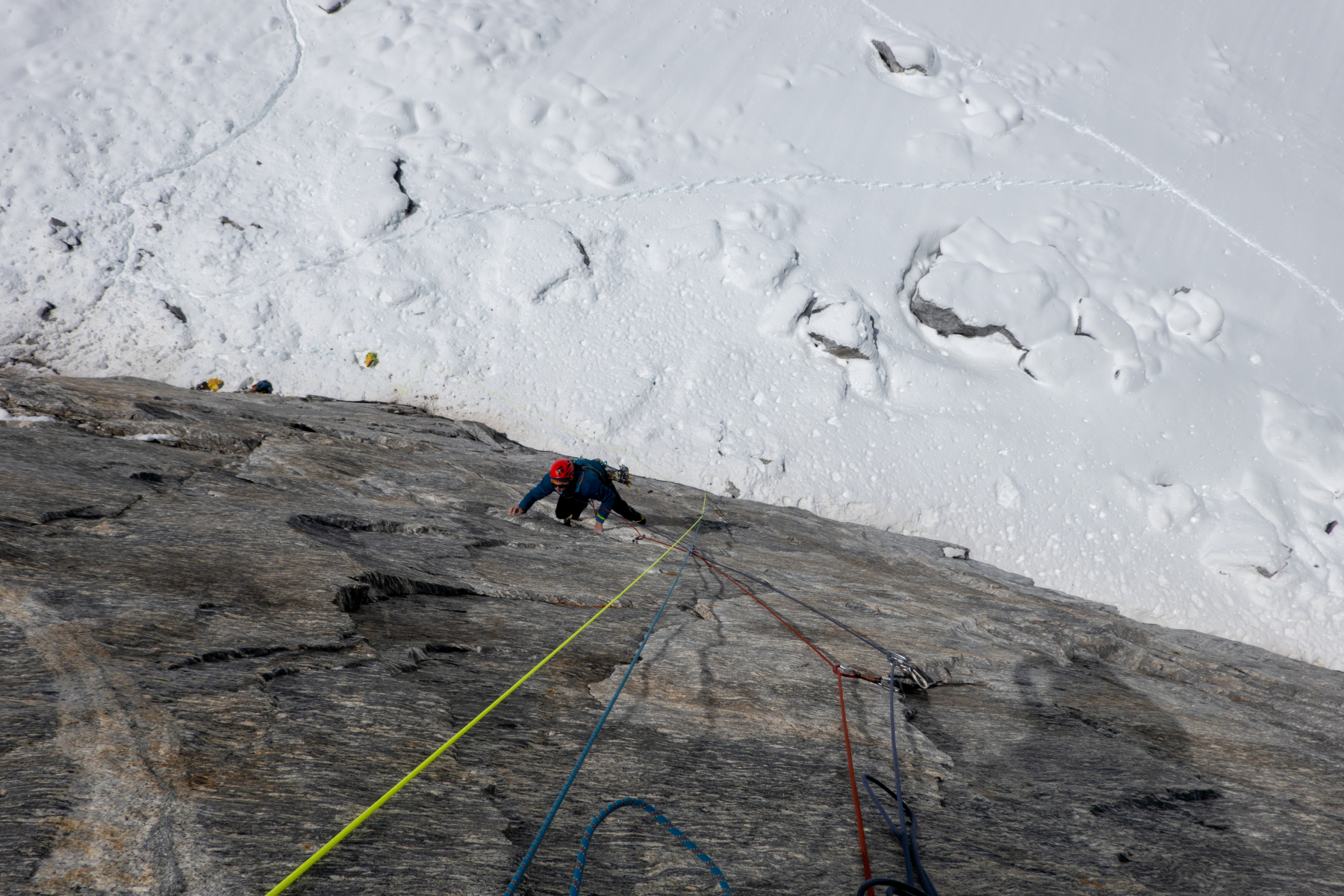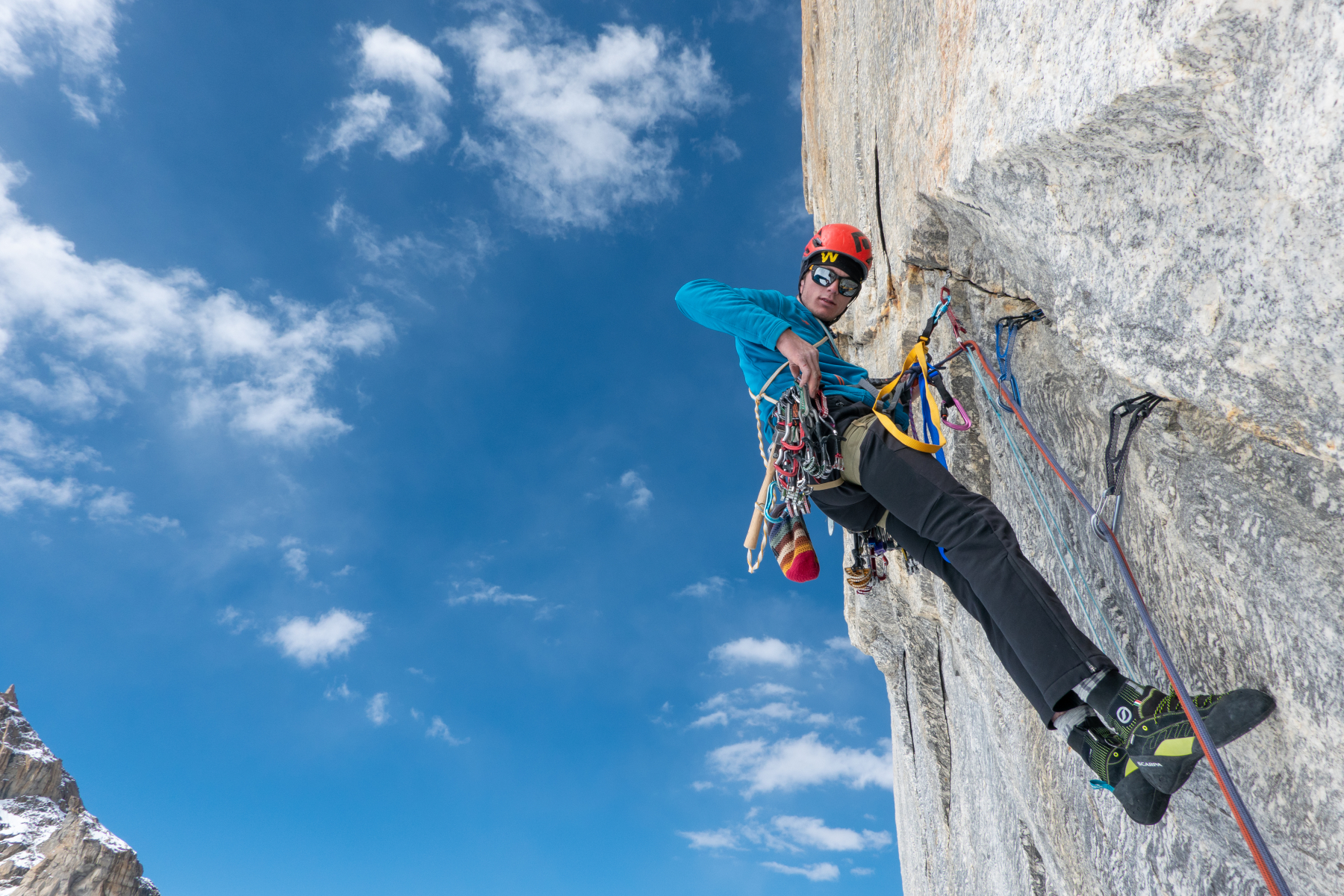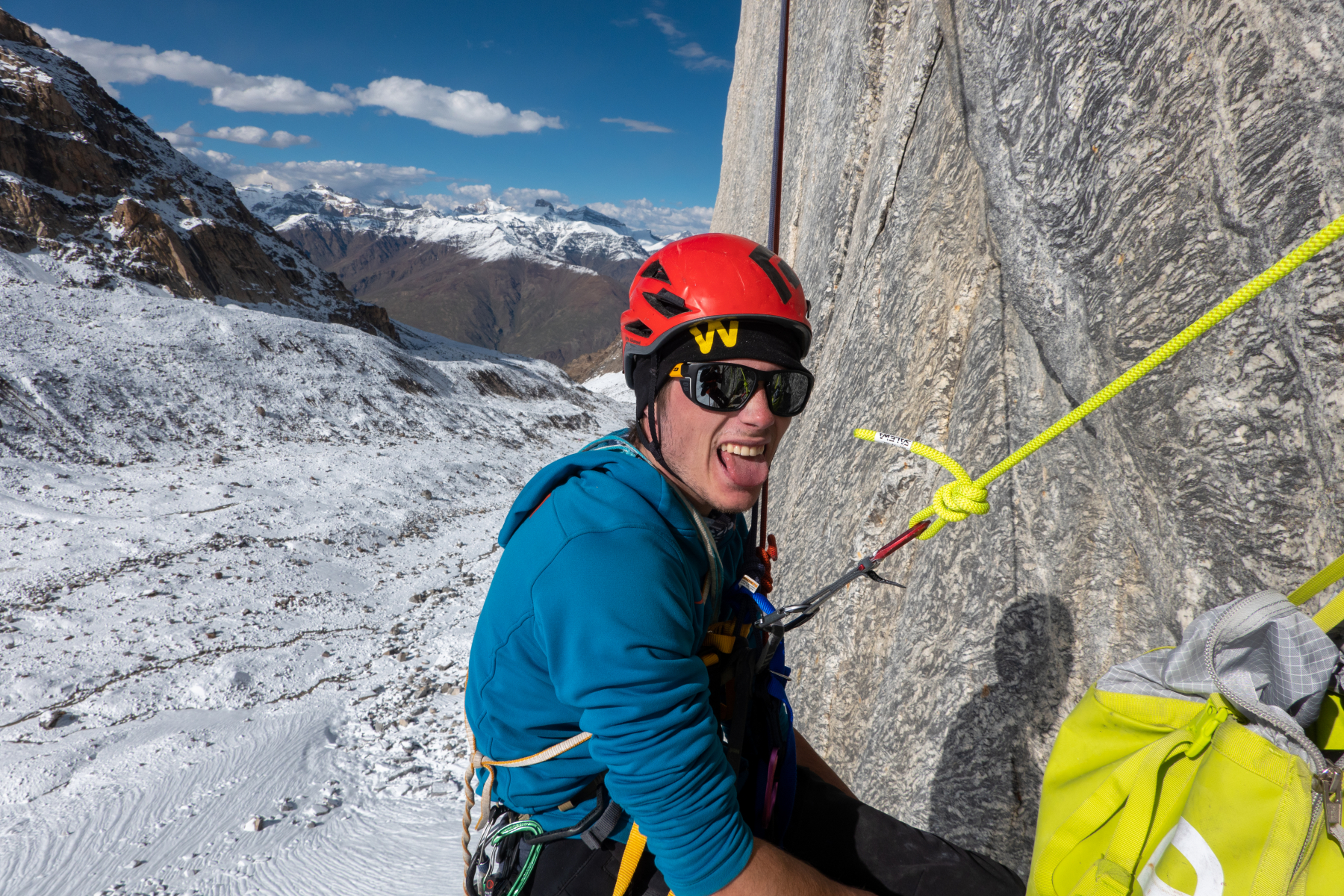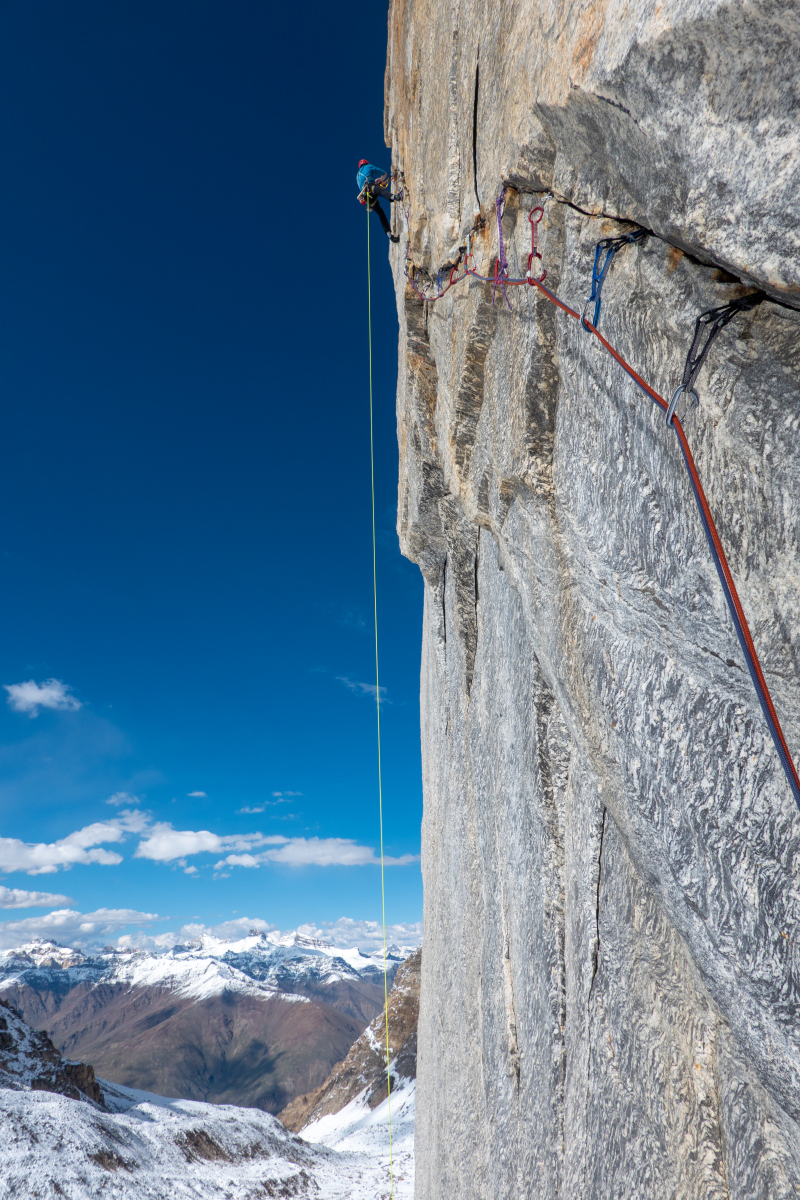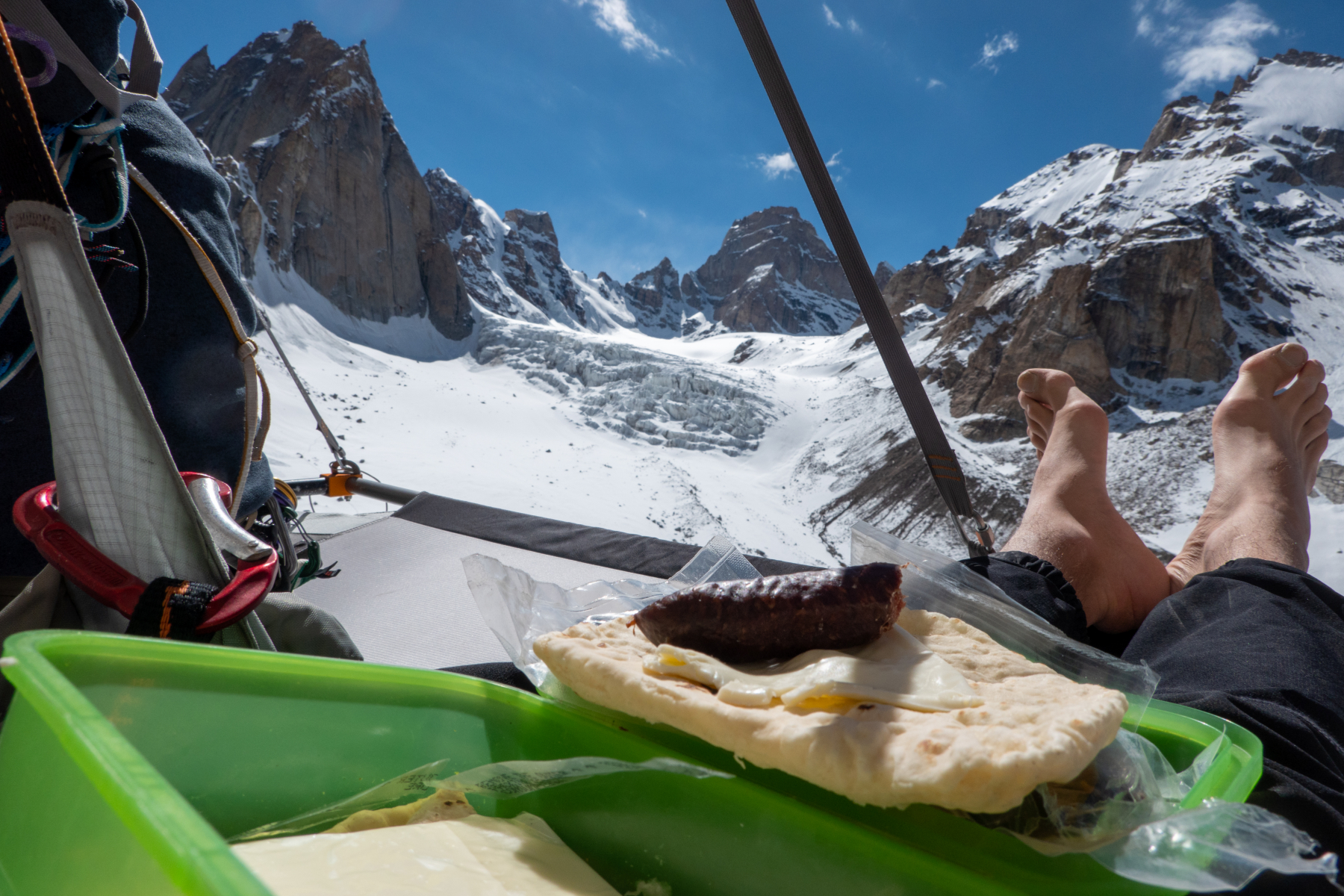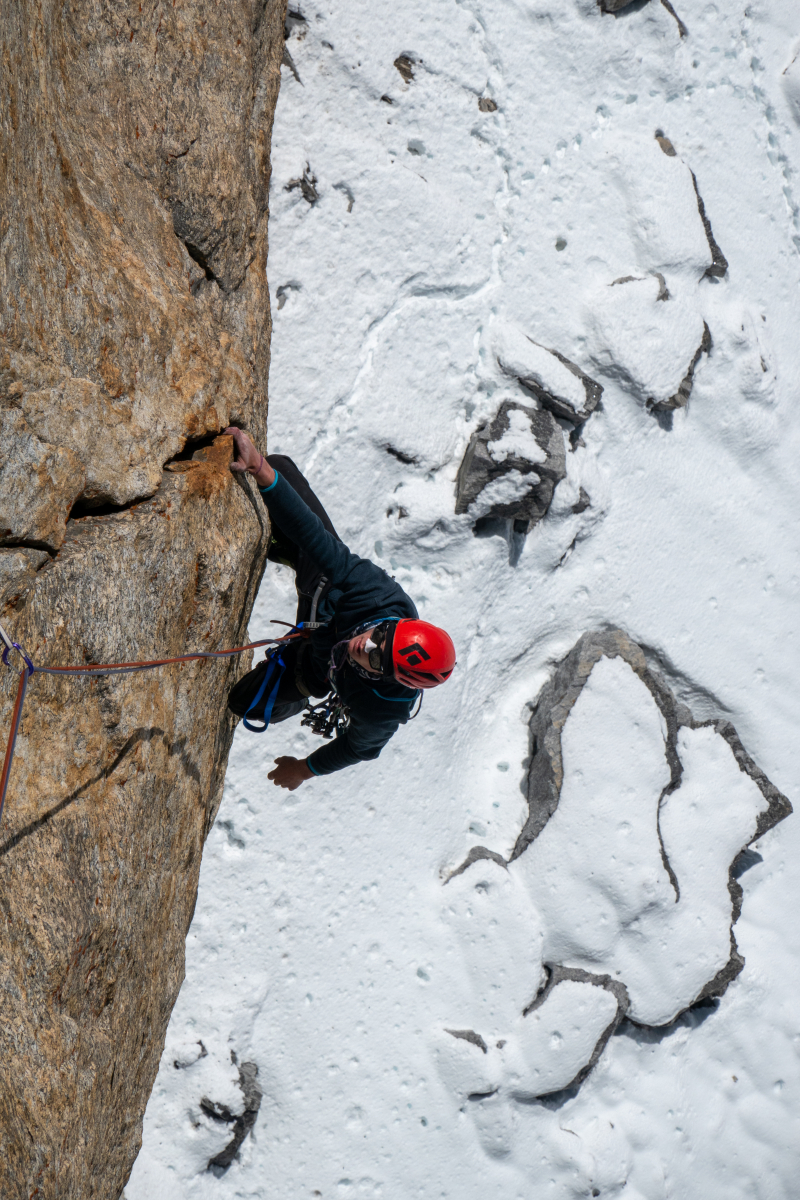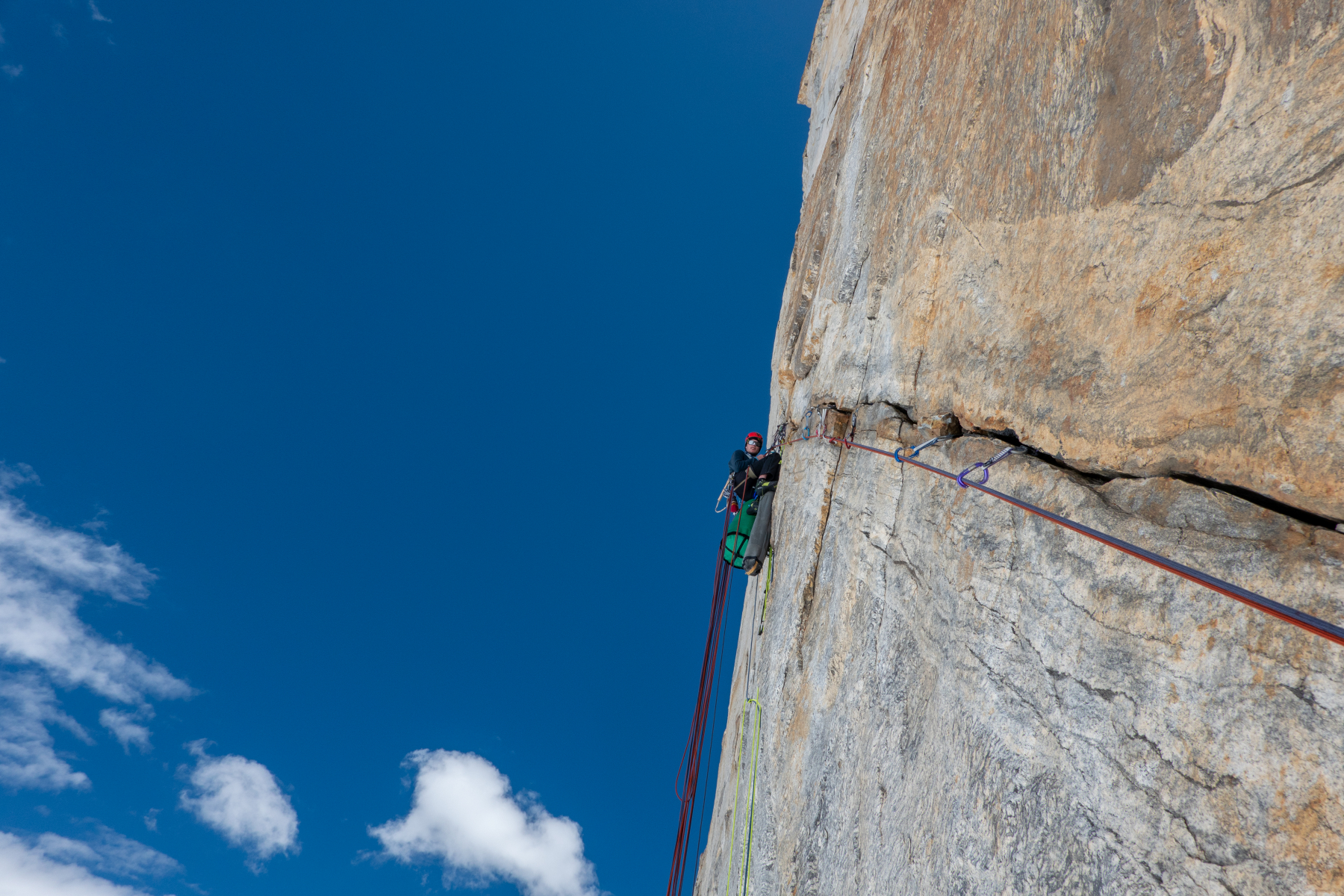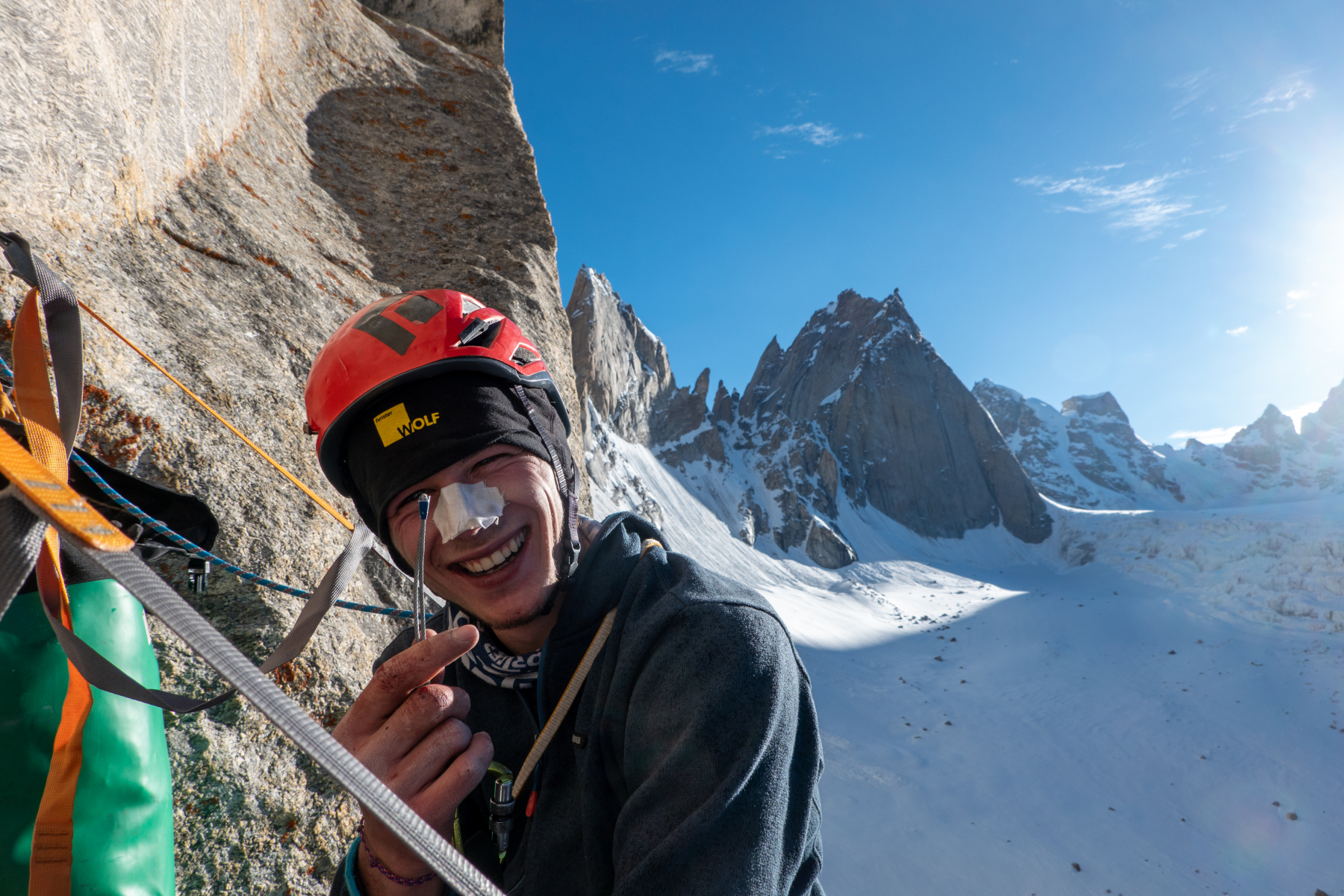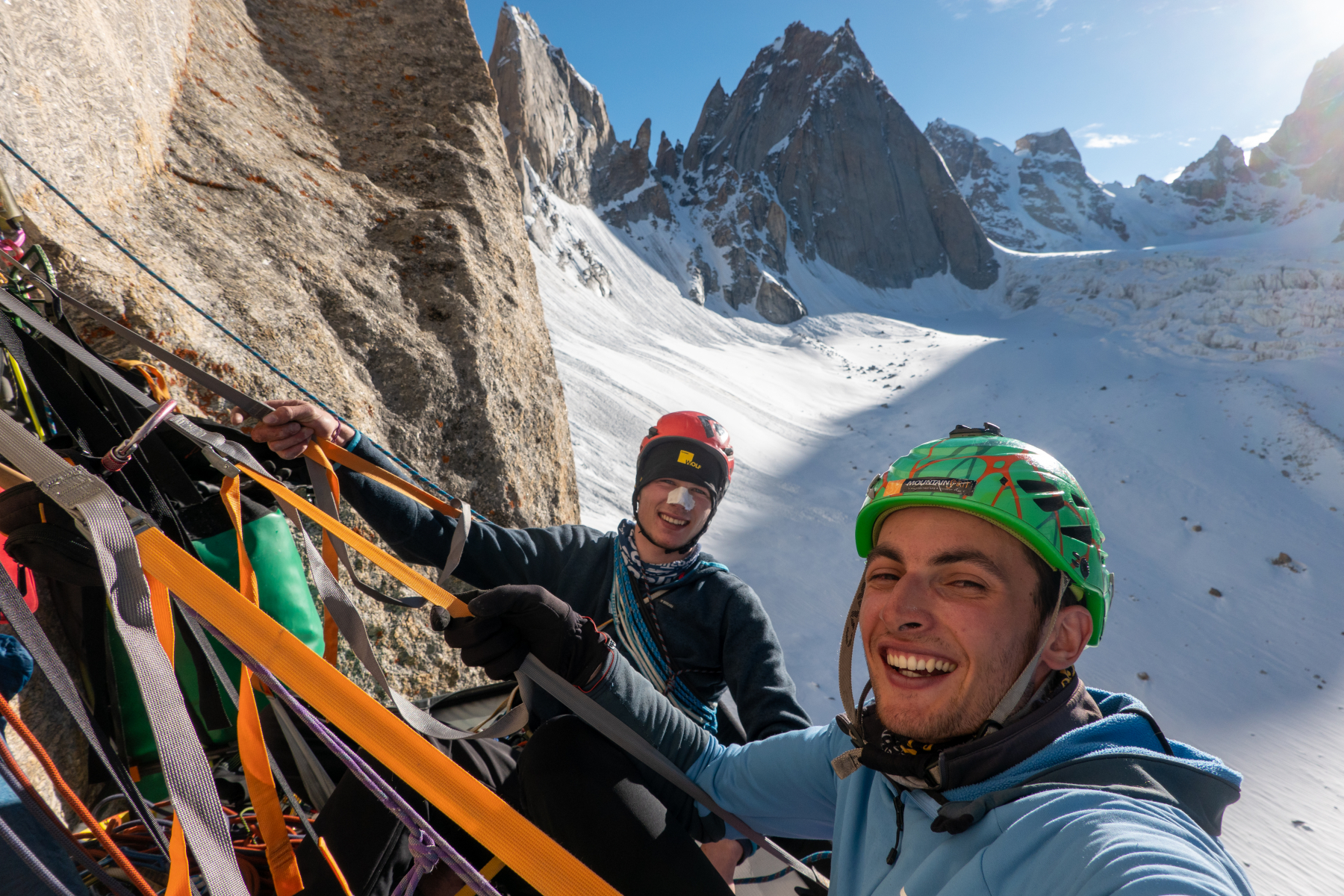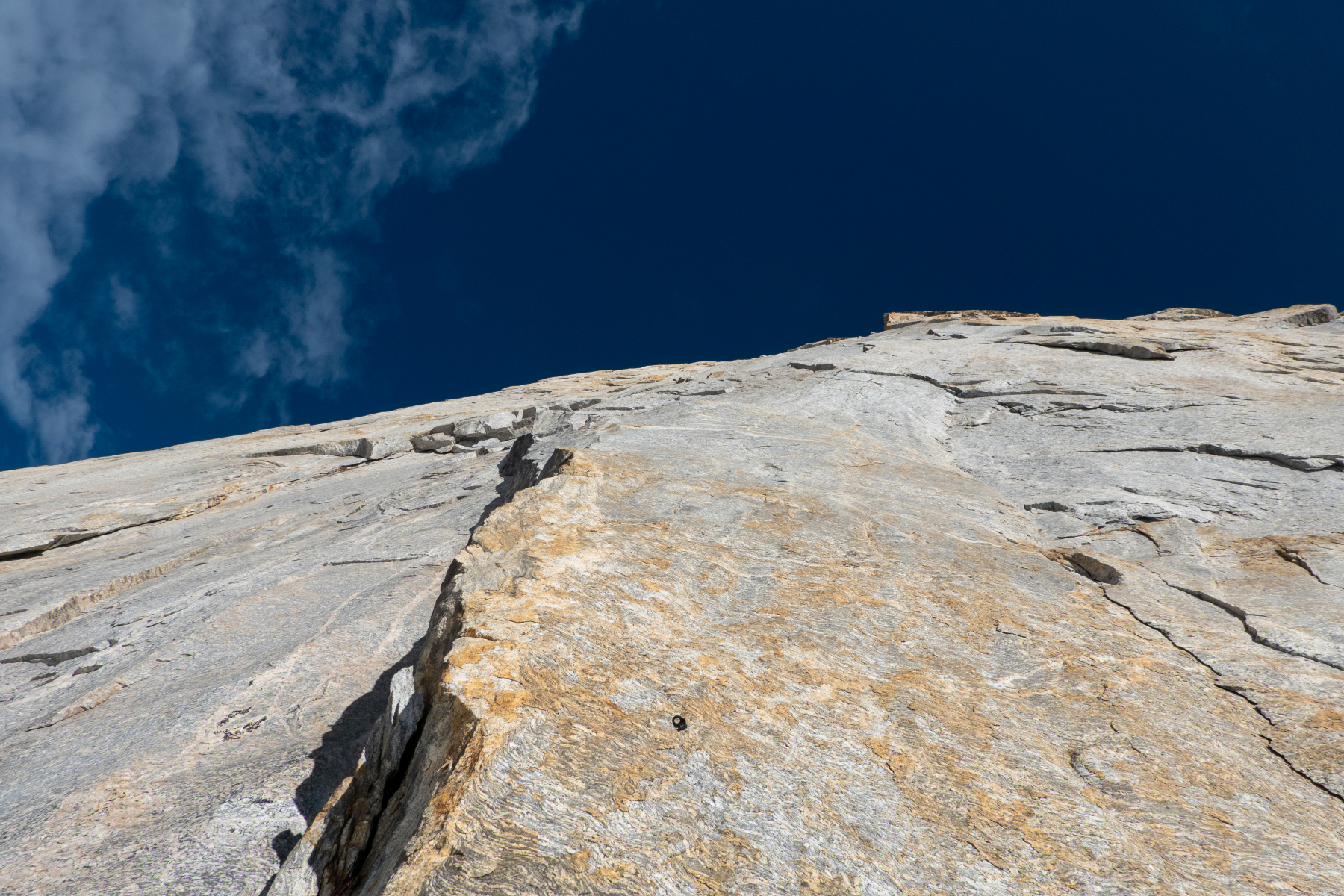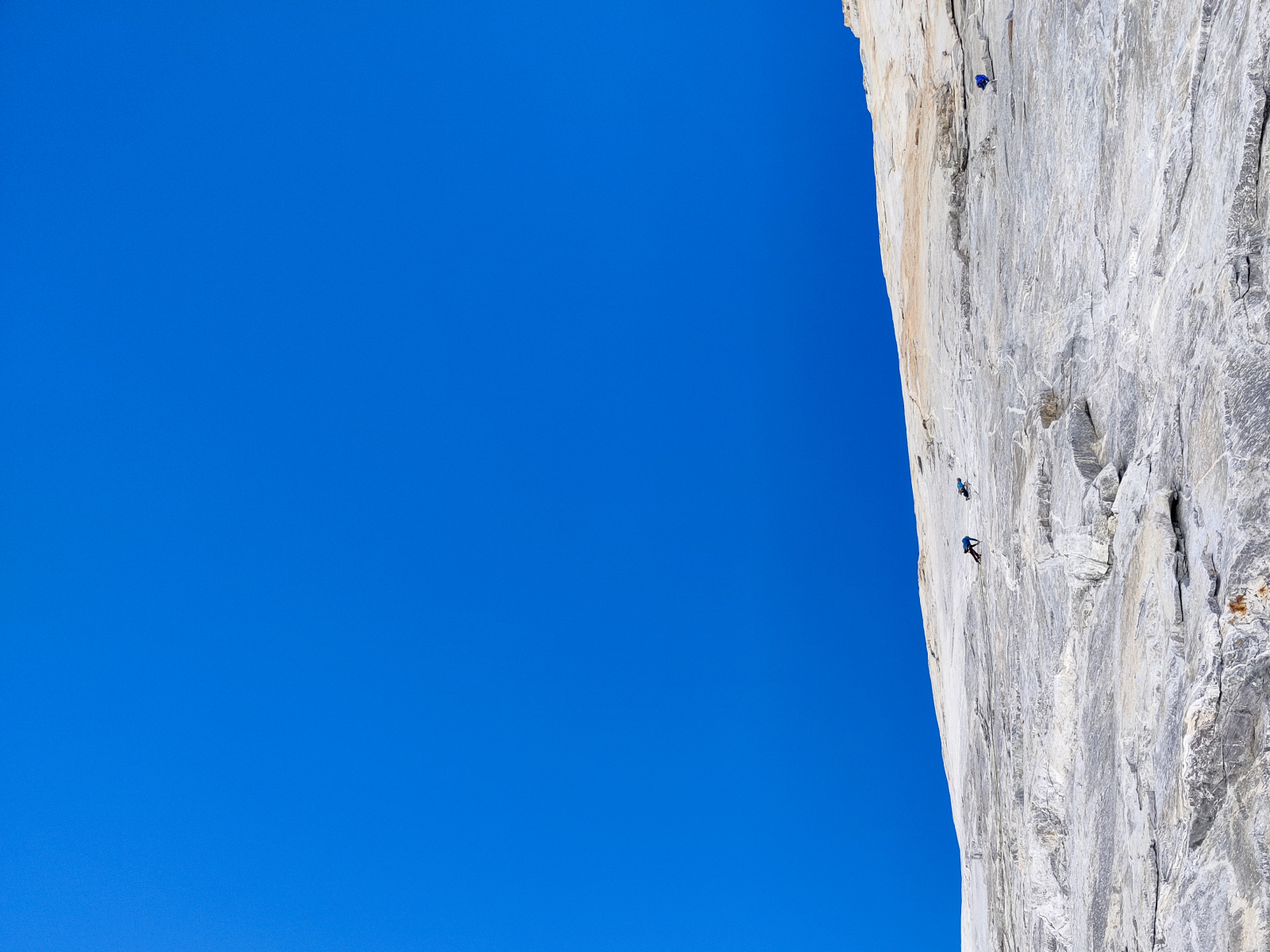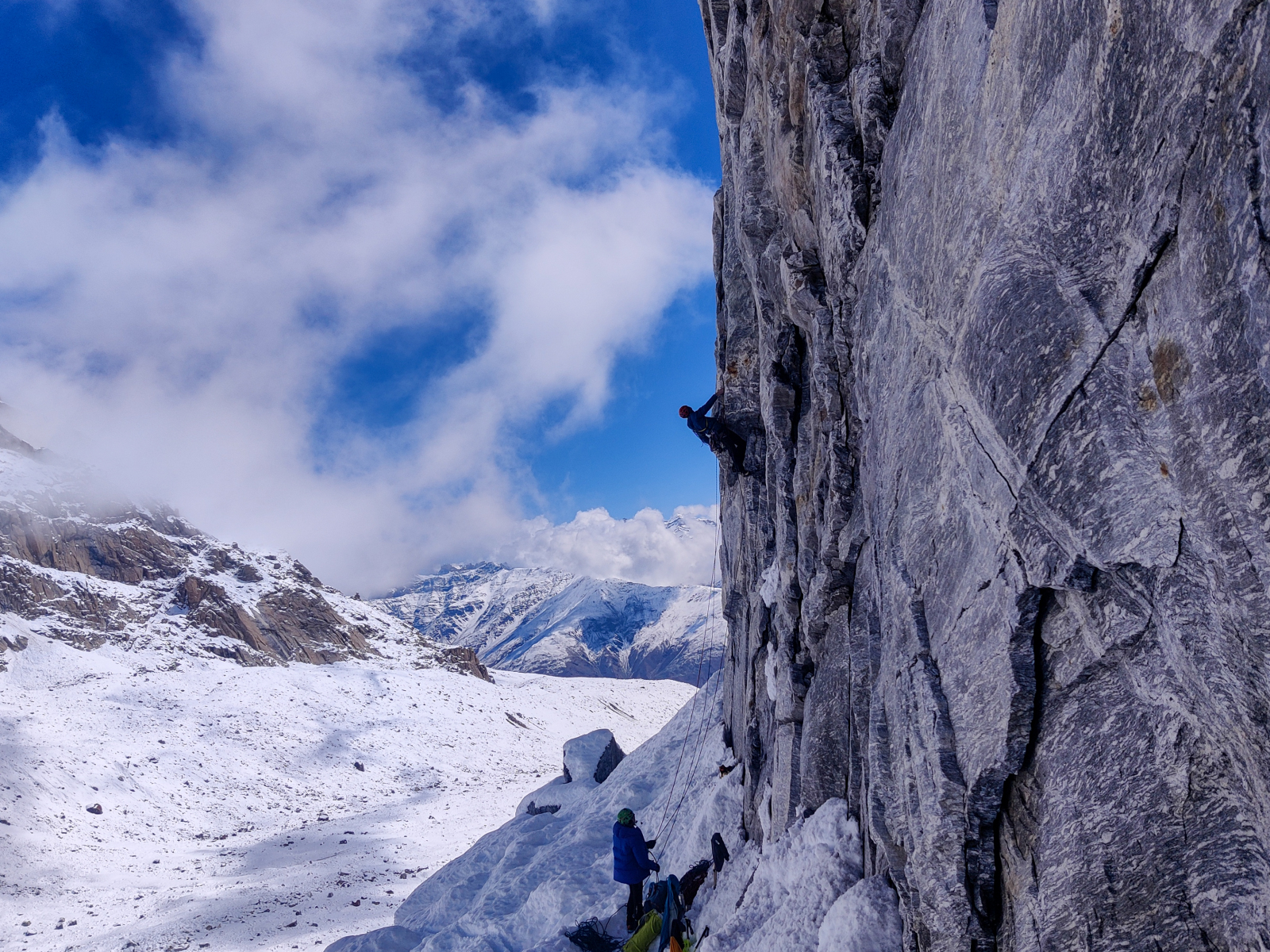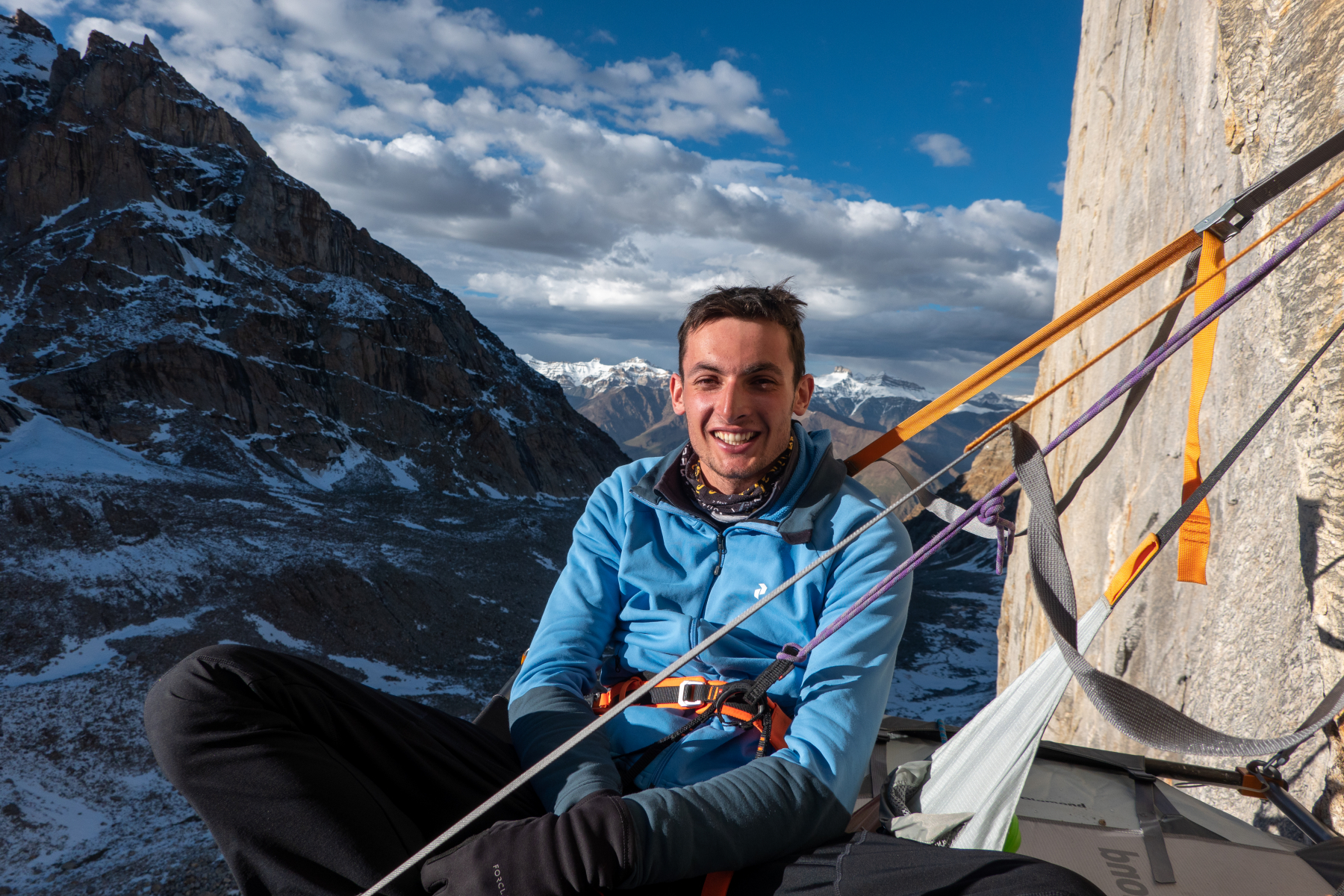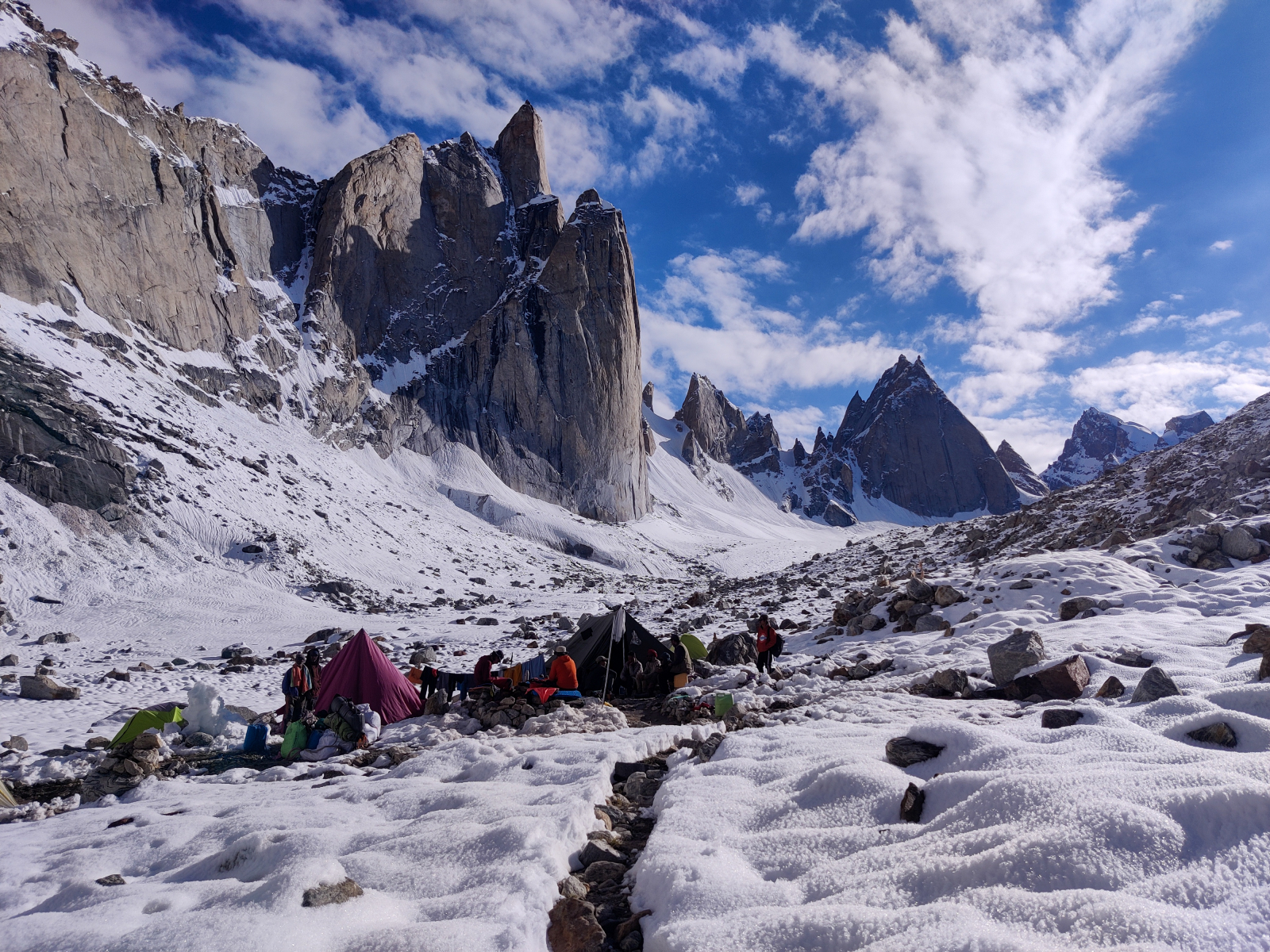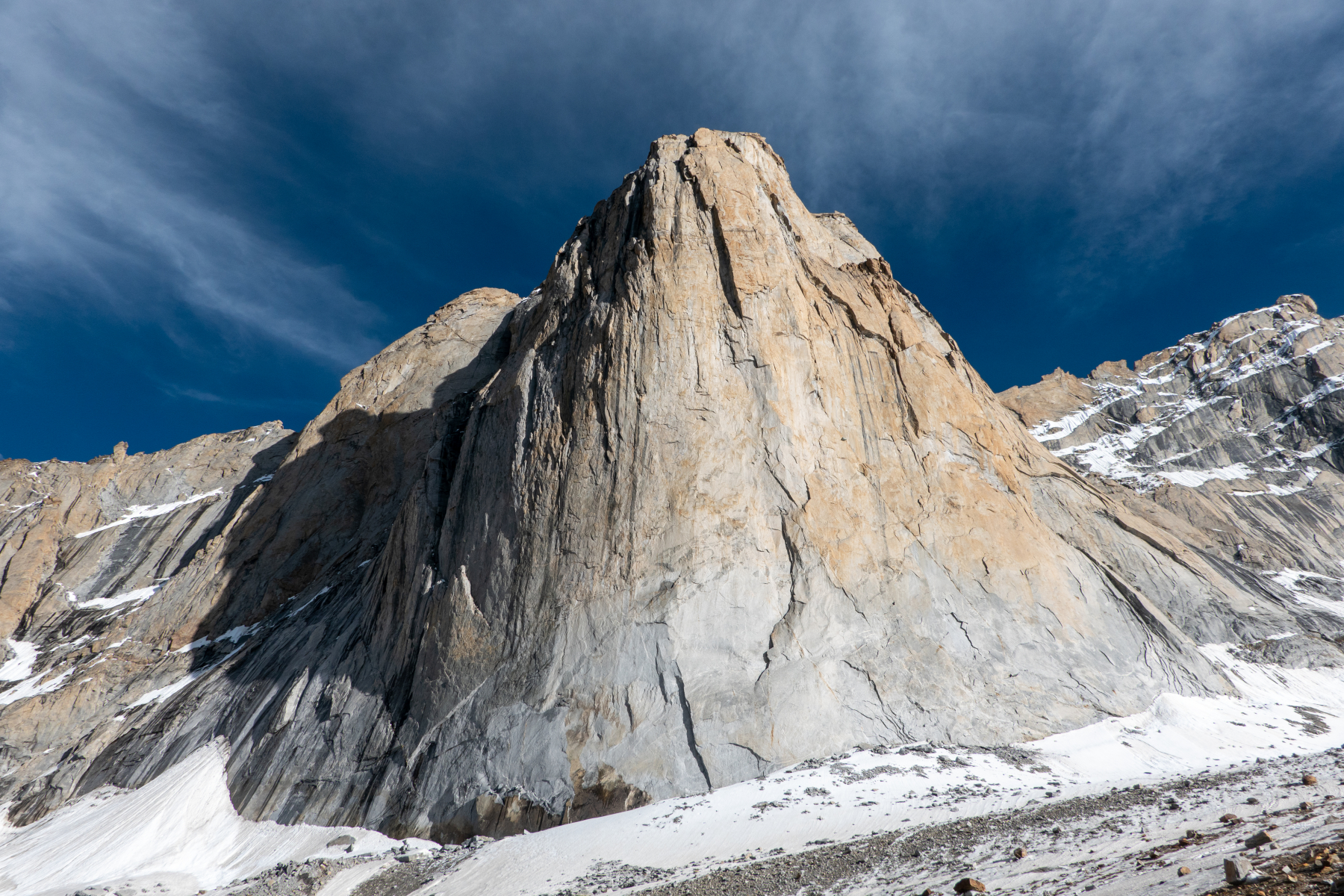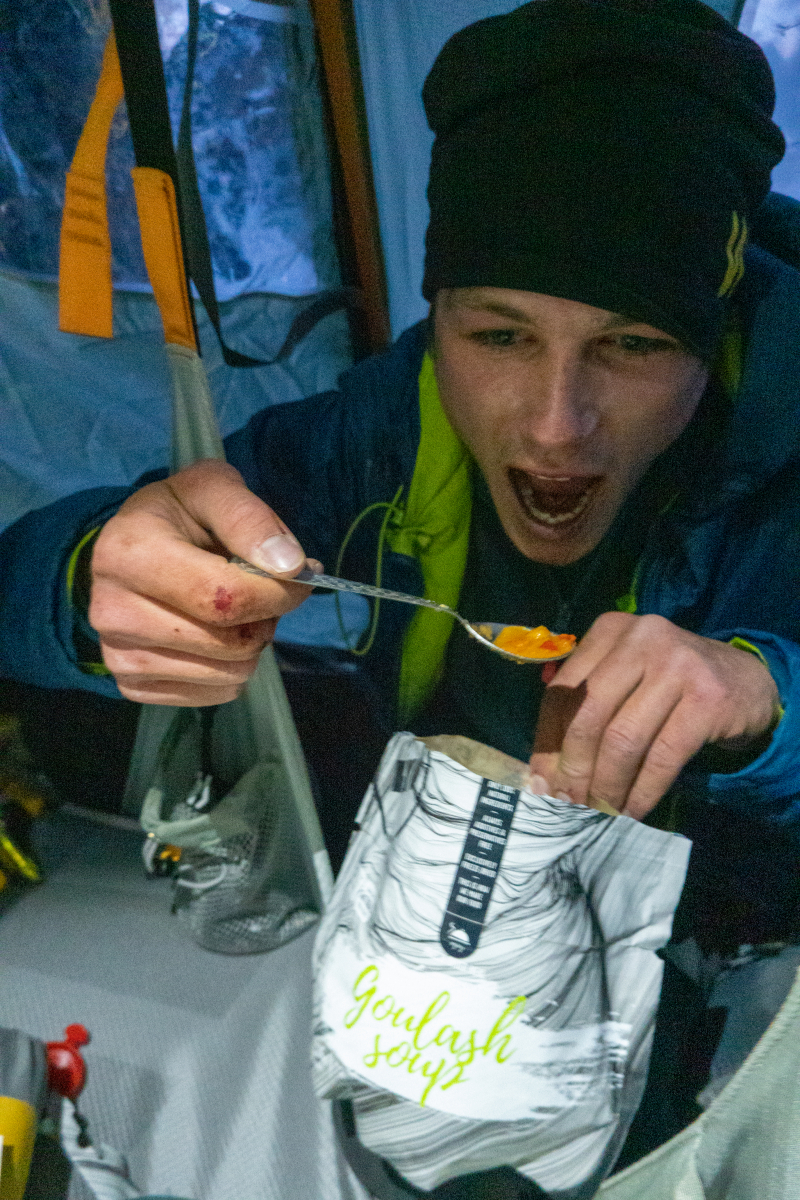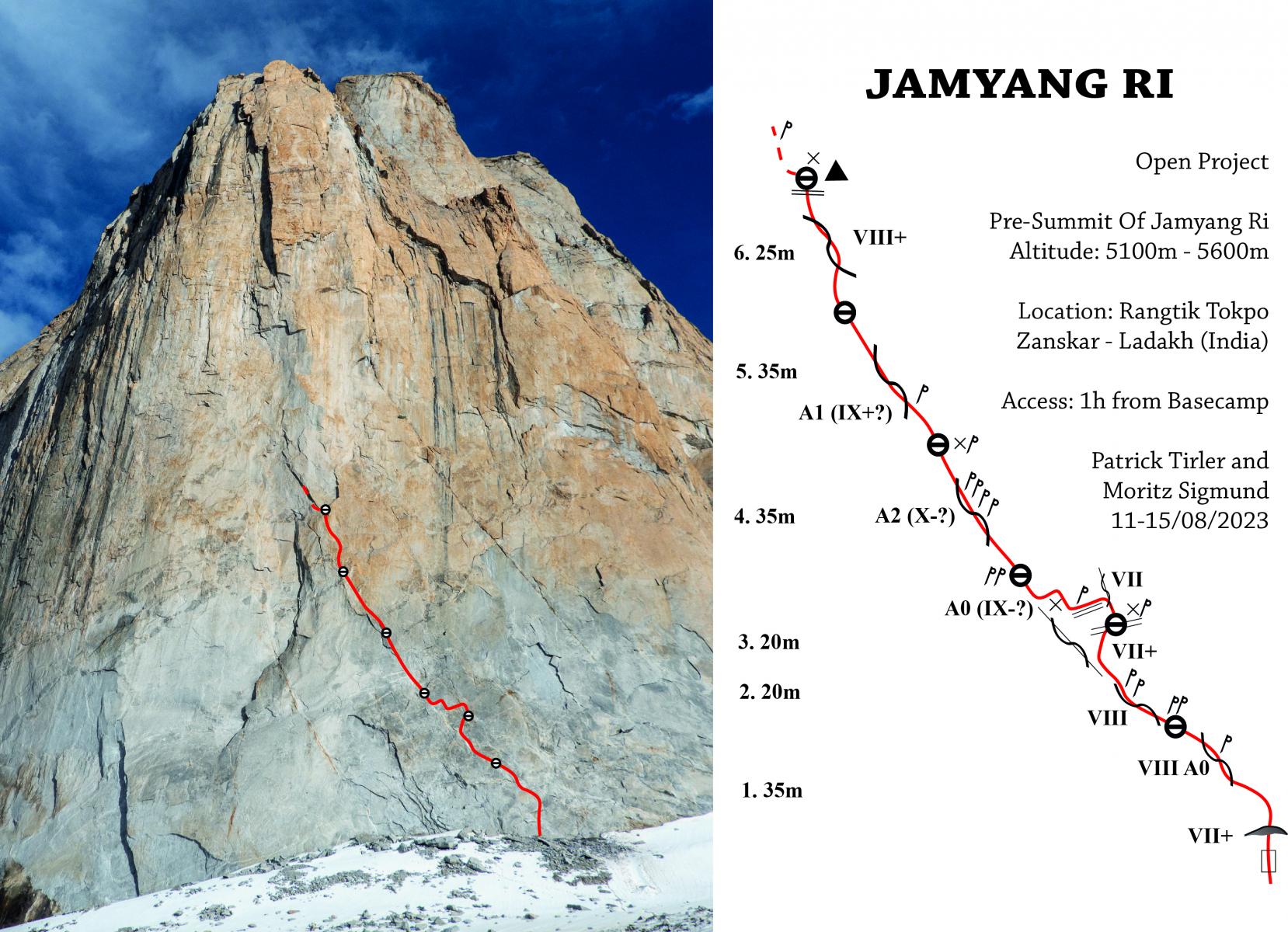A unsuccessful first ascent attempt on the at that time still unclimbed wall on the pre-summit of Jamyang Ri (5600m) in the “Rangtik Tokpo” valley in the Indian region of Ladakh.
11 – 15.07.2023
With Moritz Sigmund
Hope against expectation: A first ascent attempt!
Images of the outstanding granite walls of Jamyang Ri (5800 m) and Chanrasrik Ri (6085 m) led us to Ladakh in the Rangtik Tokpo Valley in India. Surrounded by several 6000m peaks, these two particularly striking walls are especially impressive due to their steepness and continuousness. Only a handful of climbing expeditions have discovered this beautiful valley for themselves, and so both walls have remained unclimbed. The valley’s seven developed climbing routes followed the easiest lines on the peaks of the mountains and did not even slightly touch the enormous climbing potential on the superb granite.

The journey took us from the high mountain town of “Leh” over two passes at not quite 5000m to the small, remote mountain village of “Tungri”. The approximately 200 inhabitants welcomed us with a warm invitation to eat, drink and dance at a wedding and we could hardly imagine a friendlier reception. After a few days in Tungri that felt like a dream on another planet, 23 happy porters accompanied us on the six-hour walk to the side valley where we set up our base camp at 4900m. Our three local friends “Lobzang”, “Lobzang” and “Sonam” stayed with us for the next three weeks and provided us with delicious local dishes.

On the very first two days, an unusual weather phenomenon put half a meter of snow in front of our tents and we were forced to adapt to the unexpected conditions. Fortunately, the northwest face of Jamyang Ri was completely protected from snowfall due to its steepness, and Moritz and I were able to tackle our first objective. A huge dihedral with multiple cracks decorates the upper third of the wall and represents a real kingline through the virgin wall, which is about 500m high. The middle third consists of bare, overhanging slabs through which we could only hope, with much optimism and speculation, to find a climbable line from rock flake to rock flake. The lower third is again well structured, and we estimated that this part would take a day. As always with the great mountains of the Himalayas, we were to be very wrong once again.

On the 11th day of the trip, we could finally set off for the first climbing day and we succeeded on this day the first three of the supposedly easy entry pitches. The rock was compact and steep and demanded everything from us in terms of climbing technique and morale. We only got half as far as planned and after the three pitches in the 8th and 9th grade (UIAA) we could only guess what would await us on the rest of the route. Totally exhausted, we rappelled and returned to base camp, where a three-course meal already awaited us.


The next day we pulled ourselves up on the fixed ropes and quickly reached the turnaround point from the day before. I had a slight headache and did not feel recovered at all. Therefore, I was satisfied with an eight-hour belay session that day. Fortunately, Moritz was fit and motivated. The finger crack we followed was slightly overhanging and would be any climber’s dream. But free climbing was unfortunately unthinkable at that moment. We estimated the difficulty at 8a to 8b, which would have made our line one of the most difficult alpine free climbing problems at this altitude already in the supposedly easy initial pitches.


Meter by meter, Moritz worked his way up technically with the help of a very creative use of friends, nuts, ballnuts and pitons. I cleaned the crack of loose rocks and tried to feel the free-climbing moves. The time required for each pitch was enormous and we only managed two pitches that day. What a massive project we had gotten ourselves into here, I thought. By now we realized that we would need the remaining three weeks to complete this route, not just three days as we had originally thought.


After resting for a day at base camp, we took our portaledge and three days’ supply of water and food with us to save us the daily climb up and down to base camp. That day we managed pitch 6, a beautiful hand crack that would probably be a classic in any crag. After this pitch, we reached the point that marks the logical end of the first third of the wall. There we set up our portaledge with the tent and granted ourselves a break with chapati (flatbread), sottilette and traditional “Kaminwurzn”. The big question mark of our line was now ahead and we hoped desperately that the so brilliant first six pitches do not have to end in a dead end.


Already while climbing the last pitch, I caught a few glimpses of the wall towering above us. The wall was steep and frighteningly bare. The few cracks were often closed and sometimes surrounded by loose rocks. I immediately felt that my realistic expectations might triumph over my optimistic hopes. About 100 meters above us we could see the big dihedral with the saving cracks, but the way to it seemed infinitely far and hard.

The small dihedral that started right at our belay and led further up into an unrecognizable mix of smooth slabs, thin rock flakes, and small cracks, was to be the entry point to the second third of the wall. Moritz remained optimistic, repeatedly confirming his belief that we would find enough cracks to protect. It would not be the first time that he finds a solution by simply ignoring all obstacles. I hoped for an unexpected breakthrough and let Moritz lead.

As a first protection, Moritz hammered a small nut between two hollow flakes into the dihedral. A little above it, he placed a tiny cam. When he pulled on it, both sides of the crack moved. Frightened and scared of an impending fall, he let it hang untouched. Somewhat intimidated, but still focused, he stepped with its full weight into the ladder hanging from another micro-nut and stood upright. Slowly, he took a peg out of the harness, stuck it into a narrow crack in the rock, and began hammering away. Whack! The whole rock vibrated, the nuts snapped, and Moritz flew past the portaledge with one foot in the ladder.

The fall was uncomfortable, somehow expected, but still surprising. After a short rest, Moritz tried again over a crack outside the dihedral. The first knife peg seemed to hold. When he hammered a second piton a meter above it, the first one slipped a few centimeters out of the crack. With all his finger strength, he grabbed onto some crimps and prevented a crashing fall right into the portaledge.

Demoralized, we sat in the portaledge. We did not want to use the hand drill, because the wall did not look much easier after the first few meters and if we had needed a bolt at the beginning, many more would have followed. A strenuous work that would probably have taken several days and that we didn’t like at all. The four bolts in the first six pitches, each of which required 20 minutes of intense effort, were already enough for us. Slowly we realized that the wall had won. We gave up and decided to quit the project.

Somewhat sadly, we enjoyed the beautiful sunset atmosphere on our portaledge, high above the snow-covered glacier and surrounded by all the 6000m peaks. Although we would have still had enough daylight to abseil, we took the unique opportunity to spend a night in this special location and abseil the next day. Hanging 4 meters above our highest belay was a little red friend, symbolizing our determination to finish the route in our style. The value of this brilliant climbing line to the climbing community far exceeds the value of the lost friend, and we can only hope that one day someone will have the skills to complete the route.
Written on 16/07/2023 at Basecamp Rangtik Tokpo
Patrick Tirler


